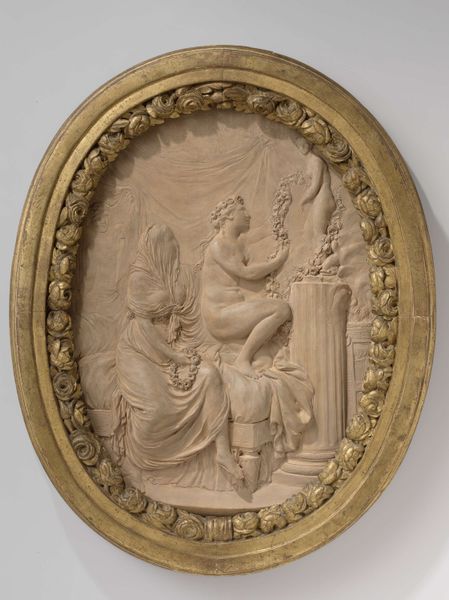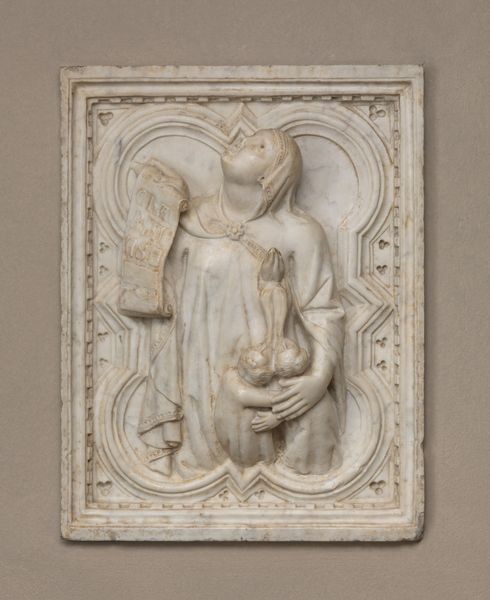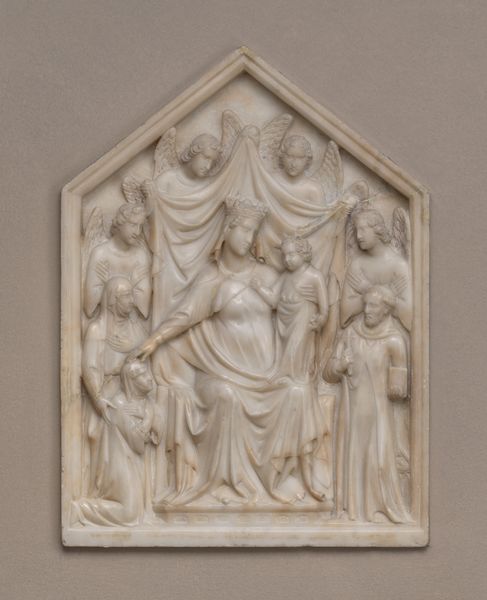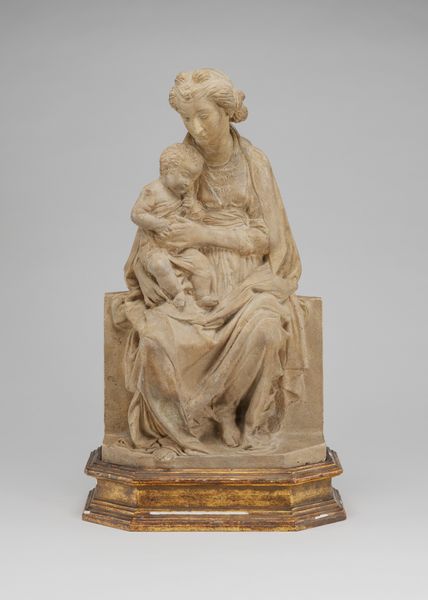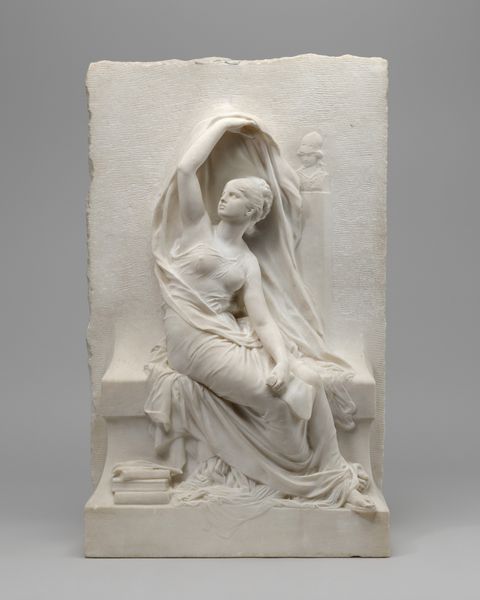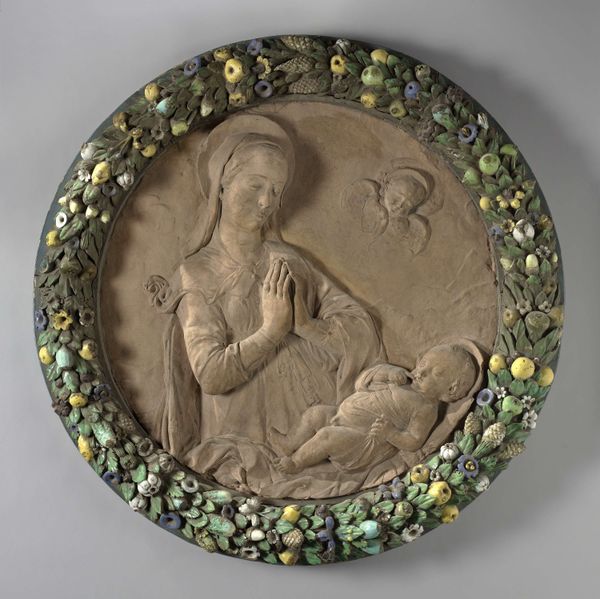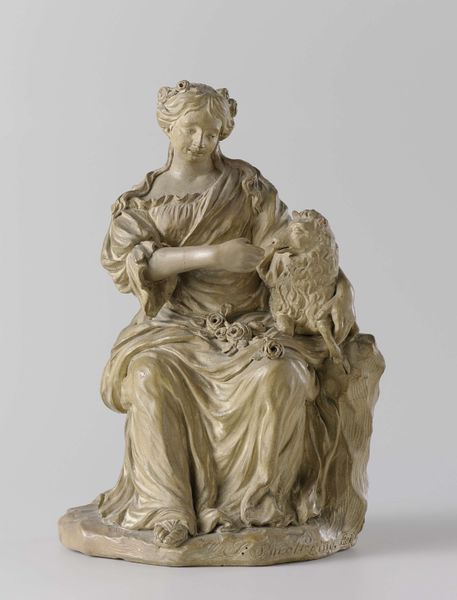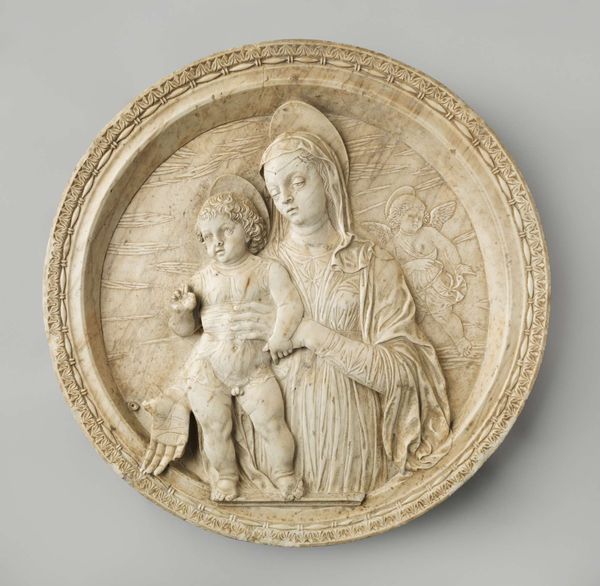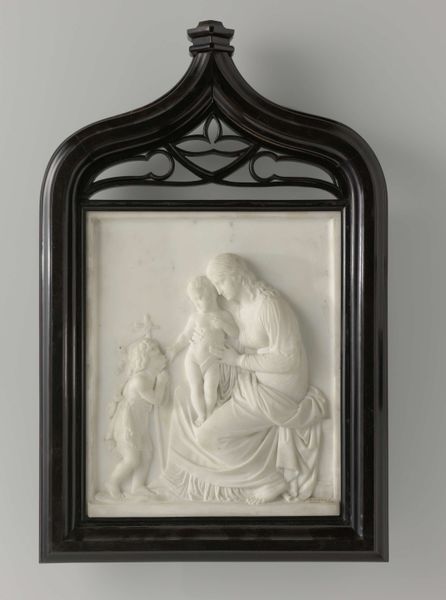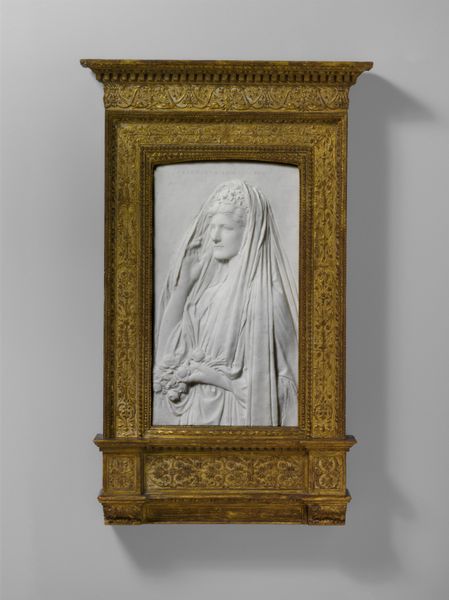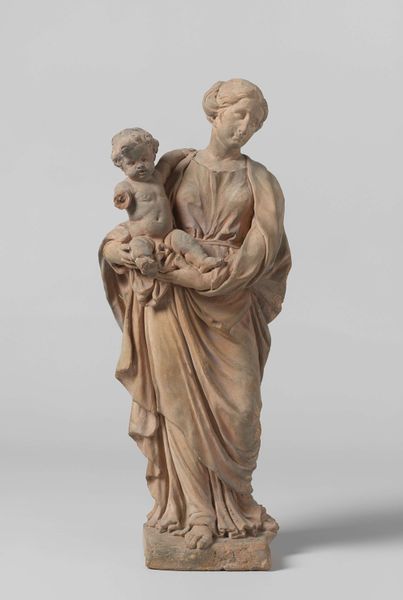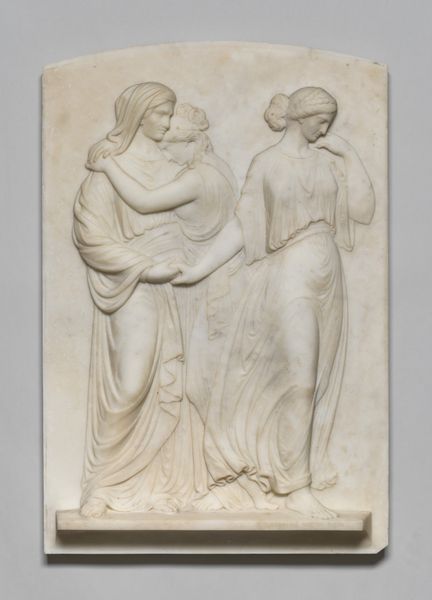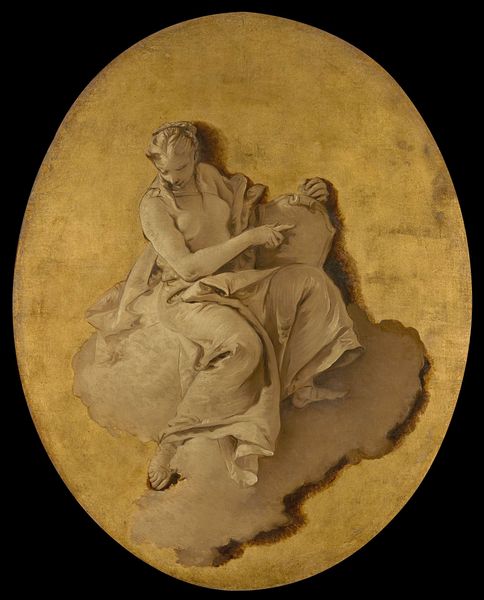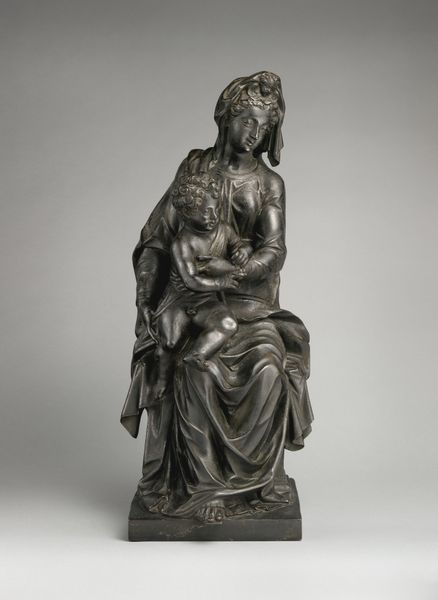
relief, sculpture, plaster
#
neoclacissism
#
allegory
#
sculpture
#
relief
#
classical-realism
#
figuration
#
sculpture
#
plaster
#
history-painting
Dimensions: height 42.5 cm, width 31.2 cm
Copyright: Rijks Museum: Open Domain
Louis Simon Boizot made this terracotta relief sculpture entitled 'The Sacrifice to Ceres' in the late eighteenth century. Terracotta, meaning 'baked earth' in Italian, is a humble material, yet here it's been used to create a refined Neoclassical composition. Boizot's mastery of the material is evident in the smooth, subtle modeling of the figures, and the crisp details of the architectural setting. It's likely he used plaster casts to create the final terracotta relief. Plaster casts allowed him to reproduce his designs, which were in great demand. This piece would have been seen as a fashionable object, embodying classical taste and knowledge, which had a significant impact on art and design during the 18th century. Mass production was not yet the norm, so skilled artisans such as Boizot would have been essential to meet demand. By considering materials and making, we can better understand how 'The Sacrifice to Ceres' embodies both luxury and labor, and also the increasing commodification of art in this period.
Comments
rijksmuseum about 2 years ago
⋮
These are Boizot’s earliest known sculptures. He made them in Rome, where he worked and studied after having in 1762 won the Prix de Rome (a prize for artists that came with a travel stipend). The sacrificial scenes are conceived as antique reliefs, with simple scenes of draped women in profile. These works are early examples of Neoclassicism in sculpture.
Join the conversation
Join millions of artists and users on Artera today and experience the ultimate creative platform.
